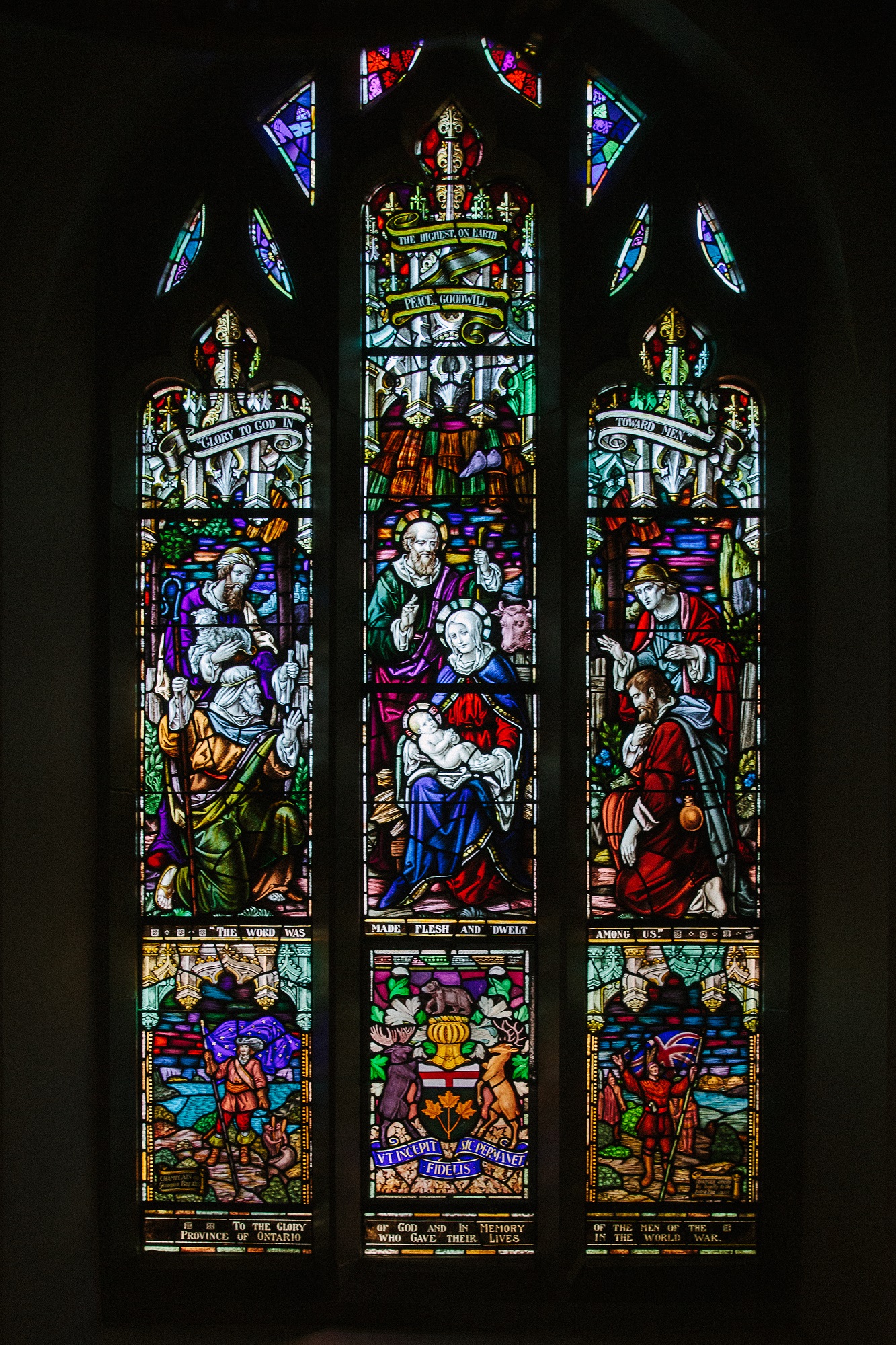Canadian Memorial Chapel was born in the hearts of private soldiers in the First World War who, guided by a sergeant, formed a working party to bury six of Canada's war dead. On a November night of 1915, in the Ypres Salient, France, one of the soldiers said to Reverend Lieutenant-Colonel (Lt.-Col.) George Fallis, CBE, ED, DD: "Padre, after the war is over some chaplain should build a memorial in Canada in memory of fellows like these who have given their all." From that moment on, he would never lay away their beloved dead without the idea of a memorial chapel in his mind.
On his return to Canada he was advised by Reverend S.D. Chown, DD, General Superintendent of the Methodist Church, to go to Vancouver and choose a site in Shaughnessy Heights facing the eternal hills to erect the chapel of his dreams. He arrived in Vancouver in May 1920, to a willing congregation and plans were quickly laid.
Lt.-Col. Fallis' friend Chris Spencer, CBE, advised him that in order for there to be national significance to the chapel, he should go across Canada and interview lieutenant governors, premiers, statesmen and leaders of each province, asking them to underwrite the windows. Ontario was the sixth province he visited.
Arriving in Ontario, LC Fallis interviewed the Honourable Newton Rowell, P.C., and a great friend of the war, Captain R. N. Burns, a distinguished chaplain. Mr. Rowell drew up a list of those to interview in Toronto and Captain Burns made the arrangements. Sir Edward Kemp, KC, MG, who was Overseas Minister for Canada during the greater part of the war, wrote a cheque for one thousand dollars. He made one stipulation, he would like pictures of the completed Chapel. The pictures were sent when his own church, Sherbourne Street, was about to be reconstructed. He had a set of slides made and showed them to the congregation. These pictures were a determining factor in bringing new beauty into an old church of Romanesque style of architecture.
Depicted in the Ontario Window - “The Nativity” symbolizes the birth of the Prince of Peace and his “Call to Peace.” The window also depicts two typical images of the troubled relationship between the First Nations and the explorers and empire builders of Europe. Champlain negotiated successful trading relationships between the French and the Huron nation. That was followed by the Jesuits bringing the story of the nativity to that nation. Father Brebeuf penned “Iesus Ahatonnia,” the song we sing as the Huron Carol, to place the birth of Christ in a 17th-century North American context. Ultimately, we see the clash of cultures in other panels. Chief Tecumseh, statesman and military strategist, was unable to negotiate equality of status with either the Americans or the British despite his willingness to lay down the lives of himself and his people.
The Ontario Window was dedicated at the evening service on 2 December 1928 by Major-General Victor Odium, CB, CMG, DSO.
